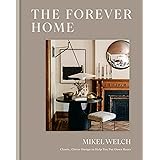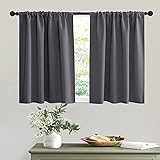Navigating the Labyrinth of Home Design Expectations: Avoiding Common Pitfalls
In the vibrant world of home decor and interior design, the journey from vision to reality often involves a delicate dance between aspiration and practicality. As humorously highlighted in the brief exchange above, even simple compliments can be misconstrued, setting the stage for more complex misunderstandings when it comes to aesthetic preferences in a design project. Whether you are a homeowner embarking on a personal renovation or a seasoned designer assisting clients, the challenge of managing expectations and sidestepping common home design mistakes is a universally acknowledged hurdle.
The allure of a perfect living space is powerful, yet the path to achieving it is frequently fraught with unforeseen obstacles. Many projects, whether grand or modest, are unexpectedly delayed or lead to dissatisfaction because fundamental elements were overlooked. Often, the root cause lies not in a lack of skill, but in a failure to clearly articulate and interpret design desires. Therefore, a proactive approach to communication and meticulous planning becomes indispensable for a successful outcome in any home transformation.
Understanding the Intricacies of Design Expectations
The initial phase of any interior design endeavor is arguably its most critical, as this is where expectations are first established and then clarified. For homeowners, this means translating abstract desires into tangible concepts; for designers, it involves the skillful interpretation of often vague requests. A common pitfall occurs when unspoken assumptions are left unaddressed, creating a foundation built on shaky ground. Consequently, the final result can feel discordant, falling short of the ideal picture held in the mind’s eye.
However, the challenge of truly understanding what someone envisions can be likened to solving a complex puzzle where key pieces are initially missing. Different individuals hold vastly different interpretations of terms such as “modern,” “cozy,” or “luxurious,” leading to potential misalignments. For instance, what one person considers minimalist another might perceive as stark and unwelcoming. It is therefore crucial that a shared vocabulary and visual references are established early in the process, ensuring all parties are operating from the same design blueprint.
Decoding Client Desires: More Than Just Words
When working with clients, deciphering their needs extends far beyond the explicit requests articulated in an initial meeting. Often, deeper psychological elements influence their aesthetic choices, sometimes unconsciously shaping their preferences for certain textures, colors, or spatial arrangements. A design brief, while foundational, merely scratches the surface of these underlying currents. Consequently, designers must act as empathetic detectives, gently probing beyond superficial statements to uncover the true essence of a client’s aspirational lifestyle.
Yet, this deep dive into personal preferences requires a delicate balance; too much intrusion can be off-putting, while too little investigation can lead to superficial results. For example, a client stating they want a “calm” bedroom might be subtly expressing a need for a sanctuary away from a hectic work life, implying specific requirements for lighting, sound insulation, and material softness. Such nuances, if properly identified, can transform a standard project into a deeply personal and restorative space, significantly enhancing satisfaction and avoiding common home decor challenges.
Common Home Design Mistakes and How They Are Avoided
Despite the best intentions, certain patterns of error are frequently observed in the realm of home design, leading to disappointment and often costly revisions. One of the most prevalent is the “scope creep” phenomenon, where the initial project parameters gradually expand without a corresponding adjustment in budget or timeline. This can occur when new ideas emerge midway through the process, or when minor alterations accumulate into significant deviations from the original plan. However, a meticulously drafted contract with clear deliverables can mitigate this risk.
On the other hand, another frequent misstep involves underestimating the impact of scale and proportion within a space. An oversized sofa in a small living room, for instance, can make the area feel cramped and visually oppressive, regardless of its individual aesthetic appeal. Conversely, diminutive furniture in a grand room can appear lost and insignificant, failing to anchor the space. It is often advised that visual aids, such as floor plans with furniture cutouts or 3D renderings, are utilized to prevent these spatial miscalculations and ensure harmonious interior design choices.
The Peril of Aesthetic Clashes and Functional Failures
A home should ideally be a cohesive entity, where each element contributes to a unified aesthetic and functional purpose. Yet, many projects falter when disparate styles are haphazardly combined, resulting in a visually disjointed environment. This can happen when a homeowner attempts to incorporate too many trends or when a designer fails to establish a clear design language for the entire property. In such cases, the space might lack a distinct personality, appearing more like a showroom of unrelated items than a thoughtfully curated home.
Furthermore, the neglect of practical considerations often leads to functional failures that undermine the beauty of a design. For example, a stunning kitchen layout might prove inefficient if the “work triangle” between the sink, stove, and refrigerator is poorly conceived. Or, perhaps a beautifully designed living room is rarely used because its seating arrangements are uncomfortable or lack convenient access to power outlets. It is generally understood that beauty must serve purpose, ensuring that every design decision enhances both the visual appeal and the lived experience of the inhabitants.
Cultivating Effective Communication in Design Projects
The cornerstone of a successful home design project lies in robust and continuous communication, acting as the bridge between diverse perspectives and potential misunderstandings. Open dialogue allows for the timely identification and resolution of emerging issues, preventing them from escalating into major problems. This reciprocal exchange is not merely about transmitting information but about actively listening and seeking clarification to ensure alignment at every stage. In fact, many designers agree that good communication is as vital as creative talent.
However, the art of effective communication extends beyond verbal exchanges; it encompasses the strategic use of visual aids and documentation. Mood boards, material samples, and detailed concept sketches provide tangible representations of ideas, offering concrete points of reference that minimize abstract interpretations. Moreover, regular progress updates and scheduled feedback sessions are often instrumental in keeping the project on track and ensuring that both parties feel heard and valued throughout the entire design journey. Such practices help manage expectations and smooth over potential home improvement hurdles.
Setting Boundaries and Managing Expectations Proactively
To prevent the scenario alluded to in the video’s title—where “clients’ tantrums speak sitting on your head”—it is paramount that clear boundaries are established early in the design process. This involves articulating the scope of work, outlining revision policies, and defining communication channels. For homeowners, understanding these parameters helps manage their own expectations regarding project timelines and potential costs. For designers, it protects their professional integrity and prevents undue demands on their time and resources.
Furthermore, proactive expectation management involves being transparent about potential challenges and limitations from the outset. Rather than promising the moon, a realistic assessment of budgets, timelines, and material availability should be provided. For example, if a specific imported tile is desired, but its lead time is significant, this should be communicated immediately, allowing for alternative solutions or a revised schedule. Ultimately, honesty and clarity build trust, which is an invaluable asset in navigating the complex world of home design projects and avoiding common design missteps.











